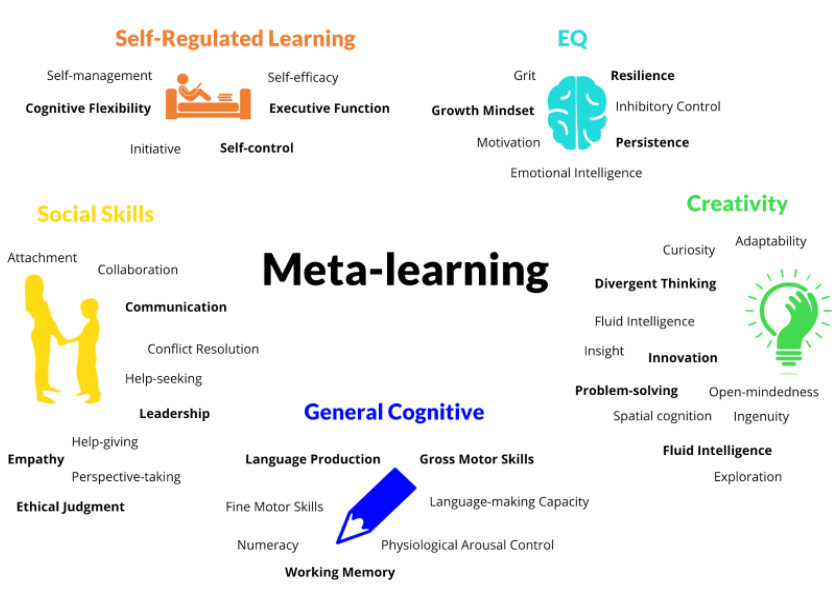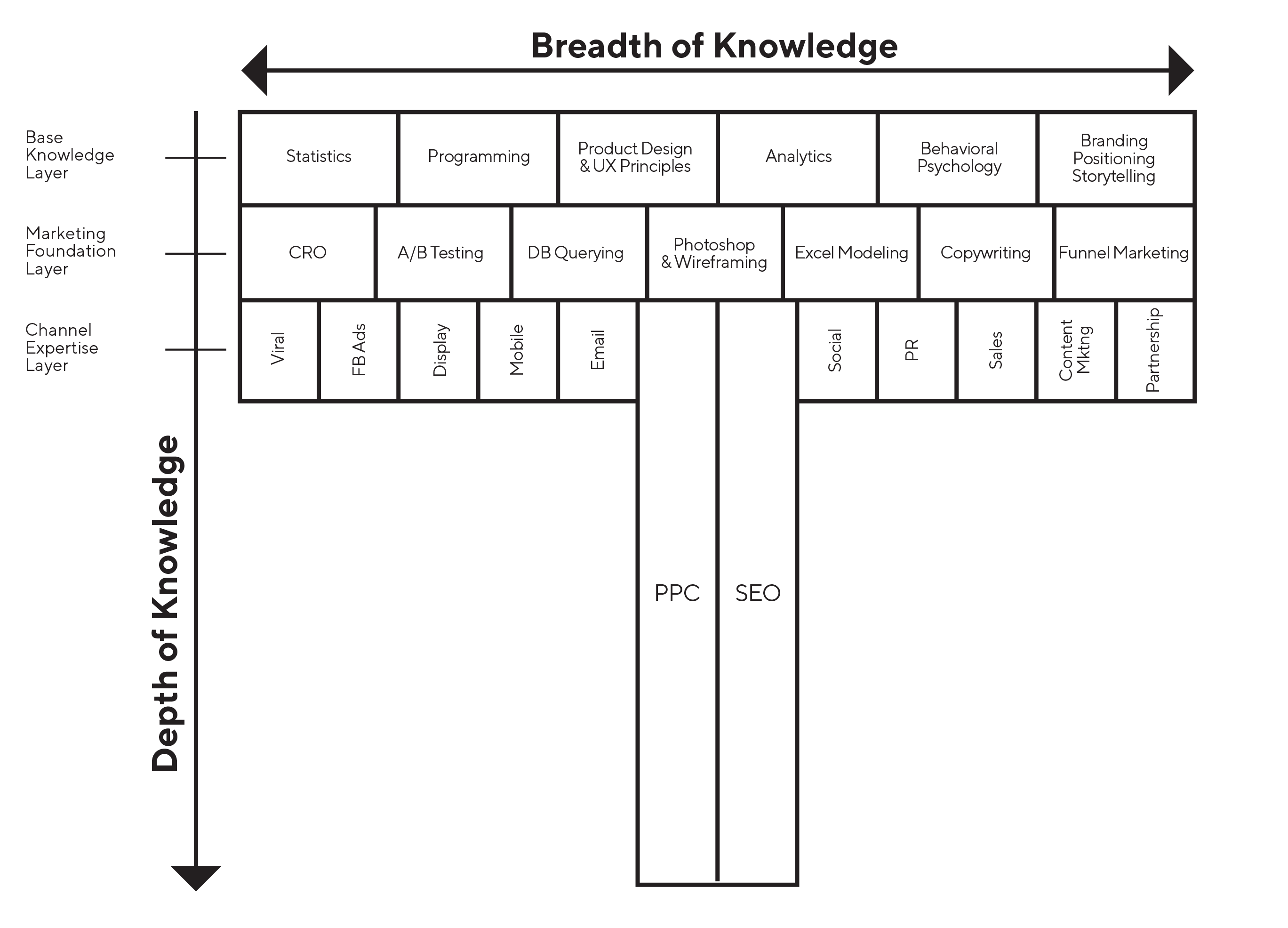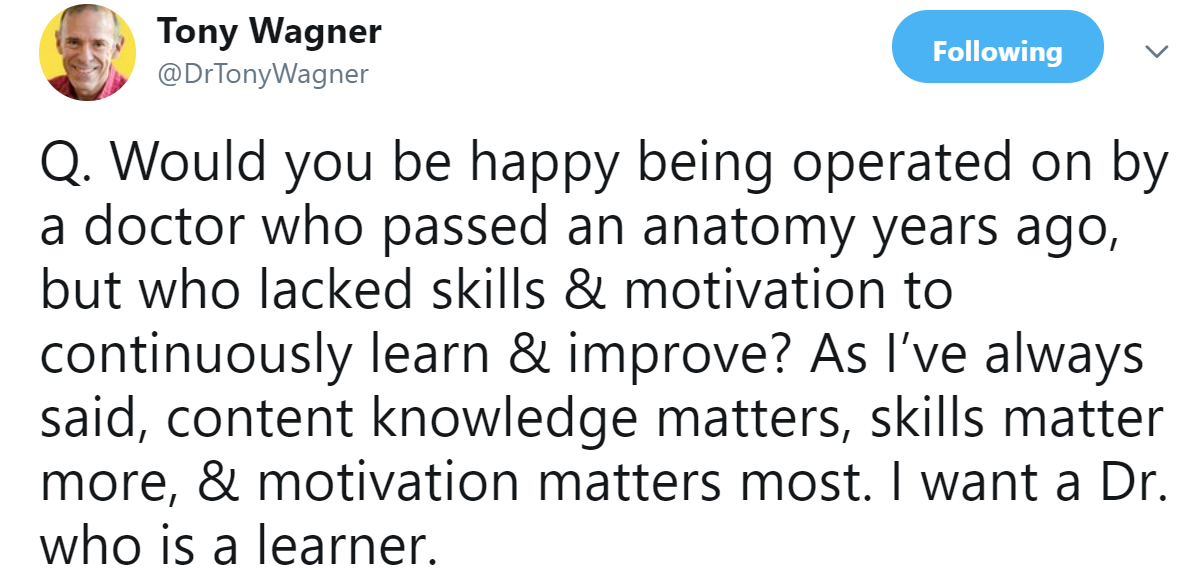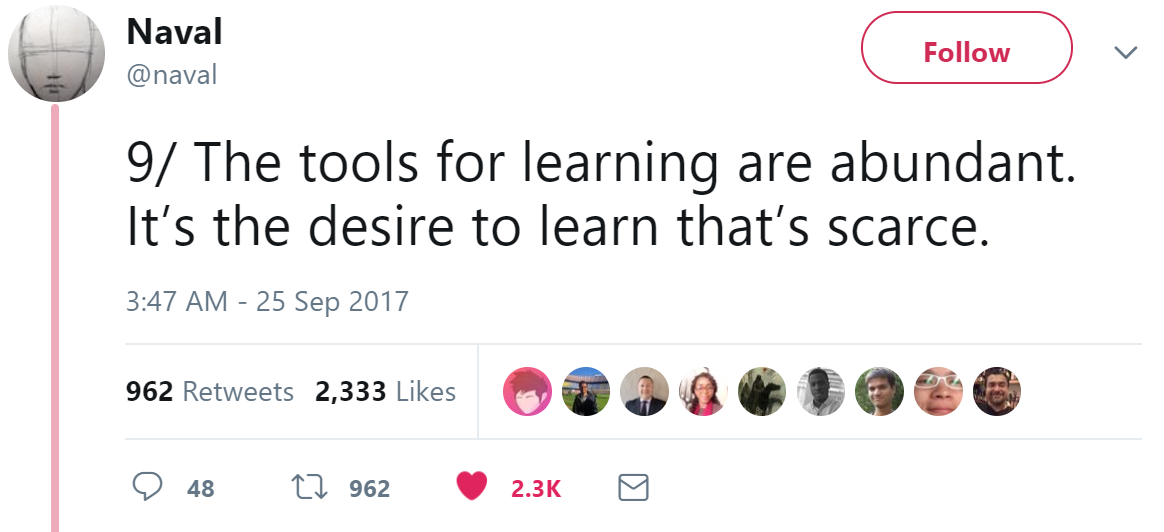How Hiring for Experience May Blind You to What Research Shows Matters Most
By Spyro Karidis
A look at the most predictive trait of the best employees.
Photo by Ryoji Iwata
Most hiring is structured around role experience:
“Must have X years experience doing Y.”
This is an optimization that, like all, has trade-offs. For one, much of the richness and diversity of transferable experience is lost. Even more problematic than that, the most predictive trait of the best employees is almost completely obscured.
In this article, you will learn:
- The #1 trait of successful hires and what drives their performance
- How the focus of most hiring practices actually deselects for this trait
- Three risks introduced by emphasizing role tenure in hiring
- The two candidate types that most clearly exhibit the #1 trait
Behavioral Drivers
Vivienne Ming, theoretical neuroscientist and AI expert, discovered the following in her research to take the bias out of hiring:
"Knowing how to program wasn’t predictive of whether you were a good programmer ... the best salespeople were the ones that cared the least about the bonuses ... It turns out the best [employees] are the ones that do it for themselves. The ones that do it, probably even if they had to pay to do it ...”
But exactly what are these top performers doing for themselves? Francesa Gino, Harvard Business School professor and author of Rebel Talent, offers us a clue:
"When we frame work around learning goals—such as developing our competence, acquiring new skills, and mastering new situations—we perform better than if we frame work around performance goals, such as hitting results targets."
Conventional wisdom is that strong familiarity with a particular job is the most critical factor in accomplishing it; therefore, generally speaking, the more role experience a candidate has, the more likely they are to succeed. But what Ming and Gino are telling us respectively is that intrinsic motivation is a better predictor, and learning itself is a more powerful driver, of performance.
Leaders at Netflix, Uber, and AirBnB will tell you that curiosity and initiative beat experience almost every time. Laszlo Bock, former SVP of People Operations at Google, will tell you that a nonexpert who is smart, curious, eager to learn and lead, will usually generate the same solutions as an expert in a non-technical role, and sometimes new solutions that are innovative.
In aggregate, what skills or traits are most predictive of the best employees? If, as Ming’s research determined, it’s not whether you went to an elite university or worked at a name-brand company, then what is it?
Across a data set of 122 million people, Ming found that meta-learning—the drive, knowledge, and skill to learn and productively apply new knowledge and skills—was most predictive.
LinkedIn co-founder Reid Hoffman arrived at the same conclusion, only he calls it explicit learning.
Neil Irwin, best-selling author of How to Win in a Winner-Take-All World and senior economic correspondent at The New York Times, calls it adaptability.
And Claudio Fernández-Aráoz calls it potential. Fernández-Aráoz has spent over 30 years studying factors in executive performance. He found that potential is the most significant predictor of success at all levels in business, a quality he distills down to having the right motivation and four traits: curiosity, insight, engagement, and determination. His research was published in the Harvard Business Review under the following cover:
Suddenly everyone, it seems, is saying the same thing: what many of the best employees are doing at work, why they’re doing it, and what they excel at most, is learning.
Yet hiring for role experience—the predominant mode of hiring—optimizes for the least possible amount of learning necessary.
From the employer’s perspective, ostensibly this makes sense as a means to reduce risk. So, let’s talk about risk.
Risks
Here are three risks introduced by selecting for role experience:
1. Disengagement
“When we face problems that we’ve encountered in the past and that we have the proper knowledge to solve, we feel a sense of comfort and confidence. This feeling, psychology research tells us, often leads us to approach situations mindlessly rather than thoughtfully.” - Francesa Gino, Rebel Talent
Familiarity breeds neglect, and hiring for it likely deselects for the most growth-oriented candidates, what former Google execs Eric Schmidt and Jonathan Rosenberg call “learning animals.”
2. Weaker problem solving
By assembling teams of experts to the exclusion of group dynamics, you risk diminishing their ability to adapt and problem solve effectively. Author and researcher Scott E. Page, who has studied the problem of homogeneity in the workplace in depth, provides extensive evidence for the role of “cognitive diversity” in problem solving, productivity, and innovation.
Adam Grant, organizational psychologist and professor at Wharton, echoes the importance of diversity of thought in making the case to hire “originals.”
Grant defines originals as constructive nonconformists who have a breadth of interests and skills, and a track record of challenging norms as a result of their curiosity and grit. In Grant’s words,
“You need originals to keep bringing fresh ideas that can challenge your current business model, your assumptions and your principles. That accelerates your ability to adapt to—or better yet, initiate—change, as opposed to getting caught by surprise.”
The message is clear: A failure to think critically and originally about hiring criteria likely produces teams predisposed to the same failing.
3. Flight risk
Lastly, by hiring folks to do a job they’ve largely already done, you shouldn’t expect them to stay long if they turn out to be hungry and radical growth opportunities are absent elsewhere within your company.
Alternatively, by hiring folks you’ve identified as principally motivated by learning, and offering them the opportunity to grow into a role rather than repeat one, you’re investing in them and they’re deeply incentivized to invest and remain with you.
Specializing Generalists & Generalizing Specialists
What if there’s a tradeoff between demonstrated meta-learning and role experience? Almost by definition, a highly curious person will at some point have sacrificed acquiring additional years within a given role for the sake of trying something new. Or if they have remained in the same role, they’ll likely have found a creative outlet in the form of side projects or other behaviors to expand their learning.
This matters because in a world of exponential change, meta-learning is more important than tenure. Hiring for years spent in a role may grossly overestimate the time needed to become effective in most, and as a consequence may actually index for less learning in terms of rate and amount as compared to a breadth of experience over the same period. In contrast, hiring for meta-learning places a premium on density of learning and adaptability.
Stated more succinctly, whereas expertise is a trailing indicator, proof of meta-learning is a leading indicator and sine qua non going forward.
With these considerations in mind, it’s useful to relax the constraint of role experience for two reasons:
1. To account for behavioral evidence of meta-learning
"Look for people who have multi-functional backgrounds, multicultural experience and wide interests. Most hiring managers focus on depth of experience, but breadth is critical for creativity." - Adam Grant
Famed design firm IDEO, consistently ranked one of the most innovative companies in the world, looks for T-shaped individuals whose depth of knowledge and skill allows them to individually contribute to the creative process, but whose breadth of knowledge and skill—fueled by empathy and curiosity—disposes them to collaboration across functional teams.
Here’s an example of the breadth and depth of skills applicable to customer acquisition marketing:
By virtue of seeking a T-shaped generalist, you recast your search from one focused on surfacing narrow expertise, to one focused on marrying paramount behavioral considerations with relevant foundational knowledge to approach a range of work intelligently, including that required to specialize into a role.
Suddenly you’re screening for the persistence and curiosity required to acquire such breadth of skills, thereby dramatically improving your odds of a better hire.
2. To induce deeper engagement
As laid out by Gino above, if the role is too familiar, your new hire is prone to approach matters uncritically. Rather than optimize for familiarity, optimize for engagement by varying the degree of role experience required against the candidate’s track record for meta-learning. The stronger the track record, the greater the challenge you should be offering because the most engaged workers are those that experience flow.
According to well-known psychologist Mihály Csíkszentmihályi and other researchers on the topic, flow is a state we enter when immersed in work that is challenging and that acts as a magnet for learning new skills. But we are not equally disposed to achieve flow; those most likely to are characterized as highly curious, persistent, and intrinsically motivated.
Meta-learners.
The lesson is that role experience isn’t an orthogonal consideration to who your candidates are and what drives them. Treating it as such is evidence that your hiring practices—from how you initially screen candidates, to how you interview and rank them—are not designed to value the most predictive trait of success.
Summary of Findings
How assiduously one pursues their work, how critically and creatively, and how invested one is to their employer and colleagues—all of that has virtually nothing to do with role experience, and everything to do with motivation, meta-learning, and incentives that endure (i.e., personal growth).
What’s the principal takeaway from these titans of industry and research?
Hire insatiable learners, and put them in a position to learn a lot more.
Sourcing Generalists
Hiring is an intractable problem. Structuring it around role experience reduces complexity, but at what cost? Hiring in line with the behavioral principles discussed here introduces new complexity, both in terms of sourcing candidates and evaluating them for fit.
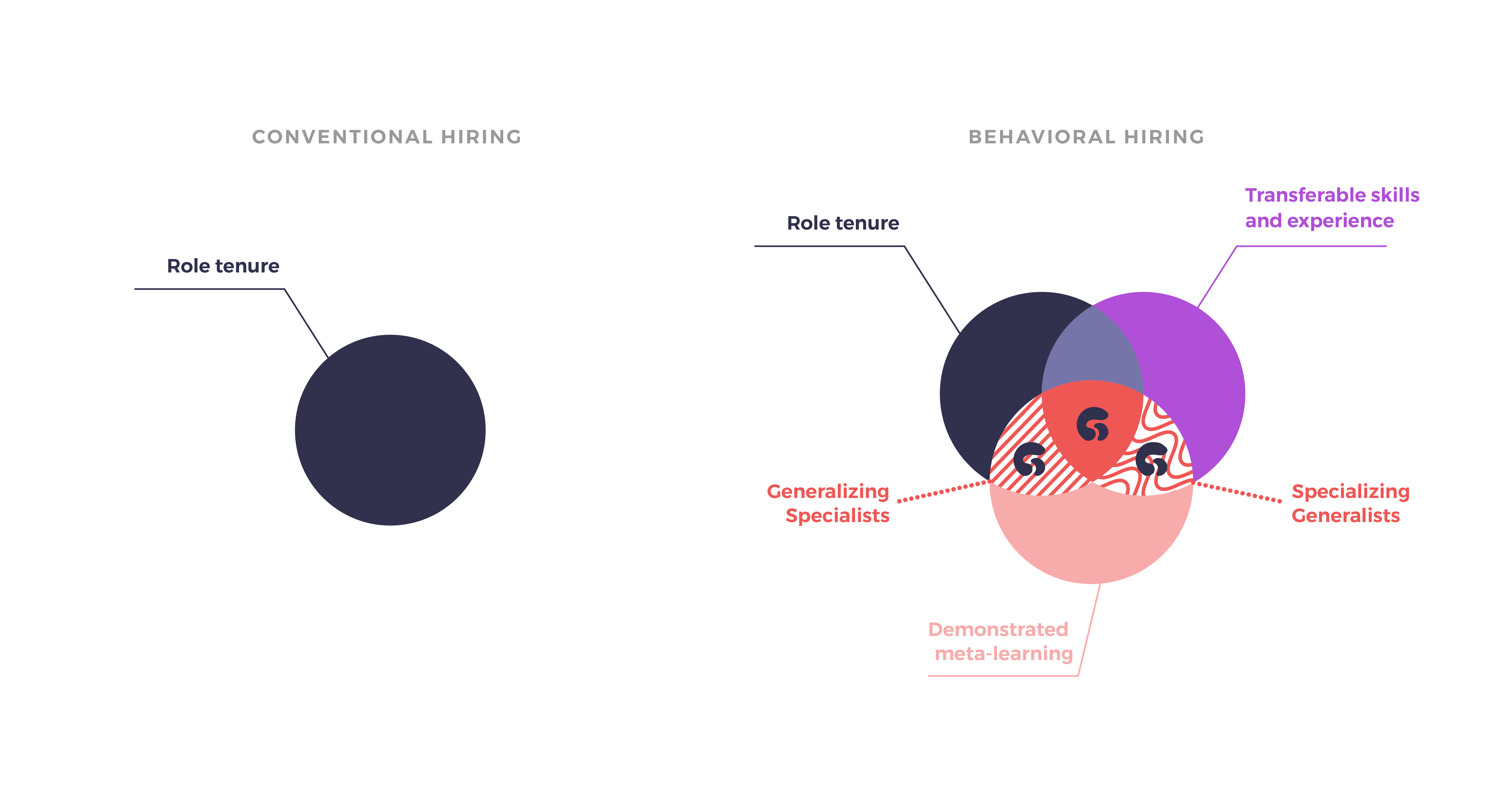
Generalists aims to resolve this burden by investing the resources needed to source and match insatiable learners against equally competitive growth opportunities. More specifically, Generalists aims to facilitate vertical and lateral career movement for non-technical roles.
* * * *
With gratitude to George Bonaci, Damon Kornhauser, and Jason White for reviewing drafts of this.
* * * *

